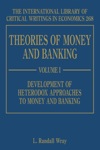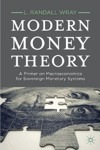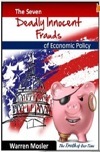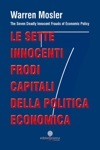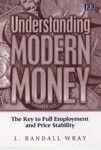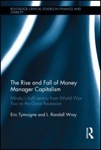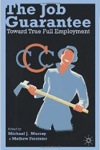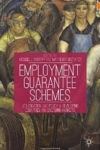The State of the Union address is in danger of purveying the usual euphemisms. I expect Mr. Obama to brag that he has overseen a recovery. But can there be any such thing as a jobless recovery? What has recovered are stock market averages and Wall Street bonuses, not disposable personal income or discretionary spending after paying debt service.
Well, no it can’t be done again. Pres. Clinton’s administration balanced the budget by “welfare reform” to cut back public spending. This would be lethal today. Meanwhile, his explosion of bank credit and the dot.com boom (rising stock prices and bonuses without any earnings) fueled the early stages of the Greenspan bubble. It was a debt-leveraged illusion. Instead of the government running budget deficits to expand domestic demand, Mr. Clinton left it to banks to extend interest-bearing credit – debt pollution that we are still struggling to clean up.
The danger is that when Mr. Obama speaks of “stabilizing the economy,” he means trying to sustain the rise in compound interest and debt. This mathematical financial dynamic is autonomous from the “real” industrial economy, overwhelming it economically. That is what makes the present economic road to debt peonage so self-defeating.
Debts that can’t be paid, won’t be. So defaults are rising. The question that Mr. Obama should be addressing is how to deal with the excess of debt above the ability to pay – and of negative equity for the one-quarter of U.S. real estate that has a higher mortgage debt than the market price is worth. If the hope is still to “borrow our way out of debt” by getting the banks to start lending again, then listeners on Wednesday will know that Mr. Obama’s second year in office will be worse for the economy than his first.
How realistic is it to expect the speech to make clear that “we can’t go home again”? Mr. Obama promised change. “We simply cannot return to business as usual,” he said on Jan. 21, introducing the “Volcker plan.” But how can there be meaningful structural change if the plan is to return to an idealized dynamic that enriched Wall Street but not the rest of the economy?
The word “recession” implies that economic trends will return to normal almost naturally
Any dream of “recovery” in today’s debt-leveraged economy is a false hope. Yet high financial circles expect Mr. Obama to insist that the economy cannot recover without first reimbursing and enriching Wall Street. To re-inflate asset prices, Mr. Obama’s team looks to Japan’s post-1990 model. A compliant Federal Reserve is to flood the credit markets to lower interest rates to revive bank lending –interest-bearing debt borrowed to buy real estate already in place (and stocks and bonds already issued), enabling banks to work out of their negative equity position by inflating asset prices relative to wages.
The promise is that re-inflating prices will help the “real” economy. But what will “recover” is the rising trend of consumer and homeowner debt responsible for stifling the economy with debt deflation in the first place. This end-result of the Clinton-Bush bubble economy is still being applauded as a model for recovery.
We are not really emerging from a “recession.” The word means literally a falling below a trend line. The economy cannot “recover” its past exponential growth, because it was not really normal. GDP is rising mainly for the FIRE sector – finance, insurance and real estate – not the “real economy.” Financial and corporate managers are paying themselves more for their success in paying their employees less.
This is the antithesis of recovery for Main Street. That is what makes the FIRE sector so self-destructive, and what has ended America’s great post-1945 upswing.
There are two economies – and the extractive FIRE sector dominates the “real” economy
When listening to the State of the Union speech, one should ask just which economy Mr. Obama means when he talks about recovery. Most wage earners and taxpayers will think of the “real” economy of production and consumption. But Mr. Obama believes that this “Economy #1” is dependent on that of Wall Street. His major campaign contributors and “wealth creators” in the FIRE sector – Economy #2, wrapped around the “real” Economy #1.
Economy #2 is the “balance sheet” economy of property and debt. The wealthiest 10% lend out their savings to become debts owed by the bottom 90%. A rising share of gains are made in extractive ways, by charging rent and interest, by financial speculation (“capital gains”), and by shifting taxes off itself onto the “real” Economy #1.
John Edwards talked about “the two economies,” but never explained what he meant operationally. Back in the 1960s when Michael Harrington wrote The Other America, the term meant affluent vs. poor America. For 19th-century novelists such as Charles Dickens and Benjamin Disraeli, it referred to property owners vs. renters. Today, it is finance vs. debtors. Any discussion of economic polarization betweens rich and poor must focus on the deepening indebtedness of most families, companies, real estate, cities and states to an emerging financial oligarchy.
Financial oligarchy is antithetical to democracy. That is what the political fight in Washington is all about today. The Corporate Democrats are trying to get democratically elected to bring about oligarchy. I hope that this is a political oxymoron, but I worry about how many people but into the idea that “wealth creation” requires debt creation. While wealth gushes upward through the Wall Street financial siphon, trickle-down economic ideology to fuel a Bubble Economy via debt-leveraged asset-price inflation.
The role of public spending – and hence budget deficits – no longer means taxing citizens to spend on improving their well-being within Economy #1. Since the 2008 financial meltdown the enormous rise in national debt has resulted from reimbursing Wall Street for its bad gambles on derivatives, collateralized debt obligations and credit default swaps that had little to do with the “real” economy. They could have been wiped out without bringing down the economy. That was an idle threat. A.I.G.’s swap insurance department could have collapsed (it was largely in London anyway) while keeping its normal insurance activities unscathed. But the government paid off the financial sector’s bad speculative debts by taking them onto the public balance sheet.
The economy is best viewed as the FIRE sector wrapped around the production and consumption core, extracting financial and rent charges that are not technologically or economically necessary costs.
Say’s Law of markets, taught to every economics student, states that workers and their employers use their wages and profits to buy what they produce (consumer goods and capital goods). Profits are earned by employing labor to produce goods and services to sell at a markup. (M – C – M’ to the initiated.)
The financial and property sector is wrapped around this core, siphoning off revenue from this circular flow. This FIRE sector is extractive. Its revenue takes the form of what classical economists called “economic rent,” a broad category that includes interest, monopoly super-profits (price gouging) and land rent, as well as “capital” gains. (These are mainly land-price gains and stock-market gains, not gains from industrial capital as such.) Economic rent and capital gains are income without a corresponding necessary cost of production (M – M’ to the initiated). “Banks have lent increasingly to buy up these rentier rights to extract interest, and less and less to promote industrial capital formation. Wealth creation” FIRE-style consists most easily of privatizing the public domain and erecting tollbooths to charge access fees for basic necessities such as health insurance, land sites, home ownership, the communication spectrum (cable and phone rights), patent medicine, water and electricity, and other public utilities, including the use of convenient money (credit cards), or the credit needed to get by. This kind of wealth is not what Adam Smith described in The Wealth of Nations. It is a form of overhead, not a means of production. The revenue it extracts is a zero-sum economic activity, meaning that one party’s gain (that of Wall Street usually) is another’s loss.
Debt deflation resulting from a distorted “financialized” economy
The problem that Mr. Obama faces is one that he cannot voice politically without offending his political constituency. The Bubble Economy has left families, companies, real estate and government so heavily indebted that they must use current income to pay banks and bondholders. The U.S. economy is in a debt deflation. The debt service they pay is not available for spending on goods and services. This is why sales are falling, shops are closing down and employment continues to be cut back.
Banks evidently do not believe that the debt problem can be solved. That is why they have taken the $13 trillion in bailout money and run – by it out in bonuses, or buying other banks and foreign affiliates. They see the domestic economy as being all loaned up. The game is over. Why would they make yet more loans against real estate already in negative equity, with mortgage debt in excess of the market price that can be recovered? Banks are not writing more “equity lines of credit” against homes or making second mortgages in today’s market, so consumers cannot use rising mortgage debt to fuel their spending.
Banks also are cutting back their credit card limits. They are “earning their way out of debt,” making up for the bad gambles they have taken with depositor funds, by raising interest rates, penalties and fees, by borrowing low-interest credit from the Federal Reserve and investing it abroad – preferably in currencies rising against the dollar. This is what Japan did in the “carry trade.” It kept the yen’s exchange rate down, and it is lowering the dollar’s exchange rate today. This threatens to raise prices for imports, on which domestic consumer prices are based. So easy credit for Wall Street means a cost squeeze for consumers.
The President needs a better set of advisors. But Wall Street has obtained veto power over just who they should be. Control over the President’s ear time has been part of the financial sector’s takeover of government. Wall Street has threatened that the stock market will plunge if oligarch-friendly Fed Chairman Bernanke is not reappointed. Mr. Obama insists on keeping him on board, in the belief that what’s good for Wall Street is good for the economy at large.
But what’s good for the banks is a larger market for their credit – more debt for the families and companies that are their customers, higher fees and penalties, no truth-in-lending laws, harsher bankruptcy terms, and further deregulation and bailouts.
This is the program that Mr. Bernanke has advised Washington to follow. Wall Street hopes that he will be kept on board. Mr. Bernanke’s advice has helped bolster that of Tim Geithner at Treasury and Larry Summers as chief advisor to convince Pres. Obama that “recovery” requires more credit.
Going down this road will make the debt overhead heavier, raising the cost of living and doing business. So we must beware of the President using the term “recovery” in his State of the Union speech to mean a recovery of debt and giving more money to Wall Street Jobs cannot revive without consumers having more to spend. And consumer demand (I don’t like this jargon word, because only Wall Street and the Pentagon’s military-industrial complex really make demands) cannot be revived without reducing the debt burden. Bankers are refusing to write down mortgages and other debts to reflect the ability to pay. That act of economic realism would mean taking a loss on their bad debts. So they have asked the government to lend new buyers enough credit to re-inflate housing prices. This is the aim of the housing subsidy to new homebuyers. It leaves more revenue to be capitalized into higher mortgage loans to support prices for real estate fallen into negative equity.
The pretense is that this is subsidizing the middle class, but homebuyers are only the intermediaries for government credit (debt to be paid off by taxpayers) to mortgage bankers. Nearly 90 percent of new home mortgages are being funded or guaranteed by the FHA, Fannie Mae and Freddie Mac – all providing a concealed subsidy to Wall Street.
Mr. Obama’s most dangerous belief is the myth that the economy needs the financial sector to lead its recovery by providing credit. Every economy needs a means of payment, which is why Wall Street has been able to threaten to wreck the economy if the government does not give in to its demands. But the monetary function should not be confused with predatory lending and casino gambling, not to mention Wall Street’s use of bailout funds on lobbying efforts to spread its gospel.
Deficit reduction
It seems absurd for politicians to worry that running a deficit from health care or Social Security can cause serious economic problems, after having given away $13 trillion to Wall Street and a blank check to the Pentagon. The “stimulus package” was only about 5 percent of this amount. But Mr. Obama has announced that he intends on Tuesday to close the barn door by proposing a bipartisan Senate Budget Commission to recommend how to limit future deficits – now that Congress is unwilling to give away any more money to Wall Street.
Republican approval would set the stage for Wednesday’s State of the Union message promising to press for “fiscal responsibility,” as if a lower deficit will help recovery. I suspect that Republicans will have little interest in joining. They see the aim as being to co-opt their criticism of Democratic spending plans. But in view of the rising and well-subsidized efforts of Harold Ford and his fellow Corporate Democrats, the actual “bipartisan” aim seems to be to provide political cover for cutting spending on labor and on social services. Mr. Obama already has sent up trial balloons about needing to address the Social Security and Medicare deficits, as if they should not be financed out of the general budget by taxpayers including the higher brackets (presently exempted from FICA paycheck withholding).
Traditionally, running deficits is supposed to help pull economies out of recession. But today, spending money on public services is deemed “bad,” because it may be “inflationary” – that is, threatening to raise wages. Talk of cutting deficits thus is class-war talk – on behalf of the FIRE sector.
The economy needs deficit spending to avoid unemployment and poverty, to increase social spending to deal with the present economic shrinkage, and to maintain their capital infrastructure. The federal government also needs to increase revenue sharing with states forced to slash their budgets in response to falling tax revenue and rising unemployment insurance.
But the deficits that the Bush-Obama administration have run are nothing like the familiar old Keynesian-style deficits to help the economy recover. Running up public debt to pay Wall Street in the hope that much of this credit will be lent out to inflate asset prices is deemed good. This belief will form the context for Wednesday’s State of the Union speech. So we are brought back to the idea of economic recovery and just what is to be recovered.
Financial lobbyists are hoping to get the government to fill the gap in domestic demand below full-employment levels by providing bank credit. When governments spend money to help increase economic activity, this does not help the banks sell more interest bearing debt. Wall Street’s golden age occurred under Bill Clinton, whose budget surplus was more than offset by an explosion of commercial bank lending.
The pro-financial mass media reiterate that deficits are inflationary and bankrupt economies. The reality is that Keynesian-style deficits raise wage levels relative to the price of property (the cost of obtaining housing, and of buying stocks and bonds to yield a retirement income). The aim of running a “Wall Street deficit” is just the reverse: It is to re-inflate property prices relative to wages.
A generation of financial “ideological engineering” has told people to welcome asset-price inflation (the Bubble Economy). People became accustomed to imagine that they were getting richer when the price of their homes rose. The problem is that real estate is worth what banks will lend – and mortgage loans are a form of debt, which needs to be repaid.
I worry that Wednesday’s address will celebrate this failed era.


